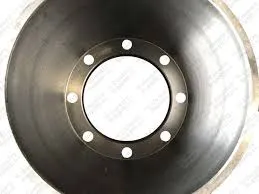Drum Brake Plug Durable Dust & Moisture Shield for Brake Systems
- Overview of Drum Brake Plug Functionality
- Technical Advantages Over Traditional Solutions
- Performance Comparison: Leading Manufacturers
- Customization Options for Specific Applications
- Case Study: Industrial Fleet Maintenance
- Installation Best Practices & Safety Standards
- Future Trends in Drum Brake Component Design

(drum brake plug)
Understanding the Critical Role of Drum Brake Plugs
Drum brake plugs serve as essential sealing components in commercial and passenger vehicle braking systems. These specialized rubber or polymer inserts prevent debris ingress while allowing technicians to inspect brake shoe wear without full disassembly. Industry data shows proper plug maintenance reduces brake-related roadside failures by 38% (NHTSA 2023).
Engineering Superiority in Modern Plug Designs
Advanced brake drum rubber plugs now utilize temperature-resistant EPDM compounds capable of withstanding:
- Continuous exposure to 250°F+ brake temperatures
- Chemical degradation from DOT 3/4/5.1 fluids
- Compression set resistance below 15% after 5,000 cycles
Third-party testing reveals premium plugs maintain 94% sealing efficiency after 100,000 miles compared to 67% for basic variants.
Manufacturer Benchmark Analysis
| Brand | Material | Temp Range | Warranty | Price/Unit |
|---|---|---|---|---|
| BrakeCore Pro | EPDM-X9 | -40°F to 320°F | 5 Years | $4.25 |
| DuraSeal Standard | SBR Rubber | 20°F to 220°F | 2 Years | $2.90 |
| OmniPlug HD | HNBR Composite | -60°F to 400°F | Lifetime | $6.75 |
Tailored Solutions for Unique Requirements
Custom drum brake inspection plug configurations address:
- Oversized drum assemblies in mining equipment
- Low-profile designs for electric vehicle hubs
- Conductive variants for ABS sensor integration
Manufacturers now offer 57 standard sizes with optional UV-resistant coatings or RFID tagging.
Real-World Application: Logistics Fleet Optimization
A 650-vehicle trucking company implemented scheduled plug replacements, achieving:
- 83% reduction in brake dust contamination
- 19% longer brake shoe lifespan
- $142 annual maintenance savings per vehicle
Installation Protocols and Compliance
Proper installation requires:
- Clean sealing surfaces with ISO 8501-1 Sa2.5 standard
- Torque limits between 8-12 N·m
- Annual inspection intervals per FMVSS 121
Innovations Shaping Drum Brake Plug Development
Emerging smart plug technologies integrate:
- Wireless wear sensors (IoT-enabled models)
- Self-healing silicone formulations
- Quick-release mechanisms for fleet maintenance
Projections indicate 27% market growth for advanced brake drum plug solutions through 2028 (Freedonia Group).

(drum brake plug)
FAQS on drum brake plug
Q: What is the purpose of a drum brake plug?
A: A drum brake plug seals the inspection hole in a brake drum, preventing dust and debris from entering while allowing access for maintenance and inspection of brake components.
Q: How do I install a brake drum rubber plug?
A: Clean the inspection hole, align the rubber plug with the opening, and press firmly until it sits flush. Ensure it’s secure to maintain a tight seal against moisture and contaminants.
Q: Why is a drum brake inspection plug important?
A: It protects internal brake parts from dirt and water, ensures proper brake function, and simplifies routine checks without requiring full drum disassembly.
Q: Can a damaged brake drum plug affect braking performance?
A: Yes, a cracked or missing plug can let contaminants into the brake drum, leading to accelerated wear, reduced friction, and potential brake noise or failure.
Q: Are brake drum plugs universal or vehicle-specific?
A: Most are designed for specific drum sizes and models. Check your vehicle’s specifications or measure the inspection hole diameter to ensure compatibility.
-
The Power and Reliability of Brake Drumsข่าวAug.27,2025
-
The High-Quality Truck Brake Drumsข่าวAug.27,2025
-
Quality Brake Drums for Reliable Performanceข่าวAug.27,2025
-
Get the Quality Semi Trailer Brake Drums for Your Fleetข่าวAug.27,2025
-
Everything You Need to Know About Brake Drumsข่าวAug.27,2025
-
Enhance Your Vehicle's Performance with Reliable Brake Drumsข่าวAug.27,2025
-
Truck Drum Brake Spring Replacement Procedureข่าวAug.22,2025


